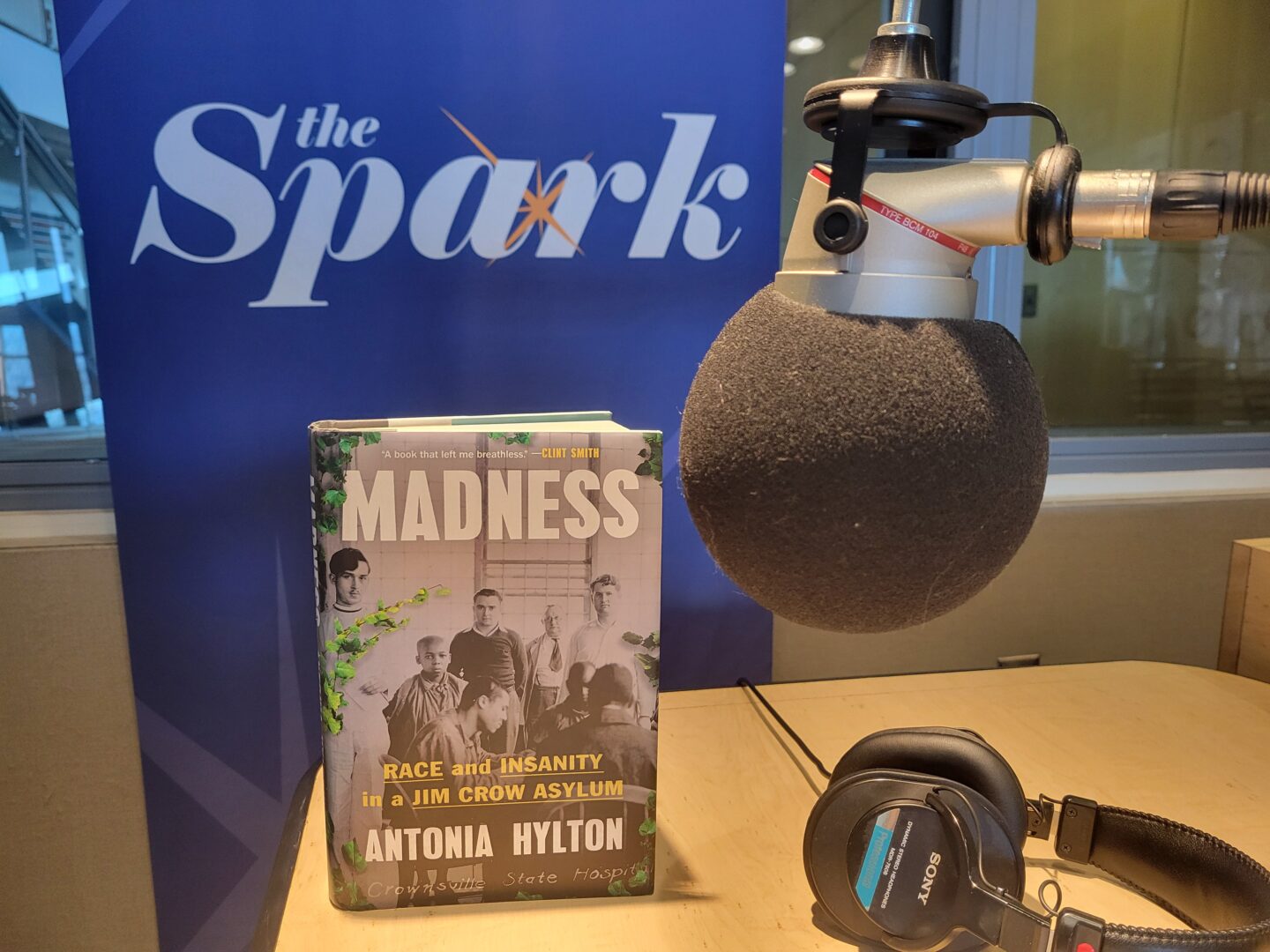
NBC’s Antonia Hylton on her new book Madness: Race and Insanity in a Jim Crow Asylum
-
Scott LaMar

Aired; March 18th, 2024.
For a long, long time, those suffering from mental illness or even suspected of mental illness or a disability would be locked up in an asylum. Often, they were just forgotten.
It was even worse for African-Americans – especially those in the South during the Jim Crow era.
Peabody and Emmy Award-winning NBC News journalist Antonia Hylton has chronicled what Black patients and workers faced at Crownsville State Hospital in Maryland in her new book Madness: Race and Insanity in a Jim Crow Asylum. Antonia Hylton joined us today on The Spark Monday.

Antonia Hylton
What inspired her to write about Crownsville? “As a college student, I decided to study the history of psychiatry, and I came across information about this place called Crownsville Hospital, founded into in 1911. But it didn’t close until 2004, within our lifetimes. And I just knew when I first read just a few sentences about it that I had to know more. And I, kind of used this site as a place to not just contribute to what we know about mental health and civil rights in this country, but also really to to better understand why in my family and why in so many communities of color, there is this longstanding shame and stigma around these issues. Why has it become so hard to address it and talk about it? And Crownsville and its story has really become my way to make sense of it all.”
Crownsville State Hospital opened as Maryland’s Hospital for the Negro Insane in 1911. One of the strangest parts of the history was that the original 12 Black men sent to Crownsville were actually forced to build the hospital as Hylton described,”That image was so shocking to me, that patients could be forced to create their own hospital before they could even benefit from their own health care. The way in which Black patients were treated so differently and seen as deserving so much less than everybody else. But also it raises questions where we write a how sick can somebody be? They’re apparently so sick that they need to be removed from society. They need to be institutionalized, but they’re so healthy that they can do around the clock physical labor, officials are writing about even forcing children to do this labor as young as ten and 12-years-old, some of whom are physically disabled, missing limbs. And they are part of the construction project as well. And so it raised all these questions about how someone can be seen as so sick, but also be such a talented, a craftsman, and contractor. Apparently they can build buildings that still stand up 100 plus years later. That to me has always really stuck in my mind.”
Hylton pointed out that throughout its history, Crownsville patients worked to pay for their own care, “They make the patients build the hospital themselves, then they make them run a massive, highly productive and very modern farm. They use modern irrigation systems. And I found in the records that the patients at Crownsville are producing way more than any other patients at other peer hospitals that are larger than Crownsville. So the the white counterparts have actually more patients because the white population in Maryland is larger. But they are doing less than the patients at Crownsville. In addition to that, they’re running a rug shop. They’re creating a basket weaving program. And all of this is done to offset the cost of their own care. And so it sets up something. And this kind of brings you back to my point about the way in which the areas that come before us really impact us to this day. So because in those early years, the hospital never gets the amount of funding that it was supposed to get, if you compare it to its other institutions and it relies so heavily on patients really running the place themselves, that kind of mistreatment, that gap is never really made up for, even in the later decades when that forced, servitude and sort of constant labor stops and they’re trying to professionalize and become a kind of normal hospital. They’re still decades behind everyone else because they hadn’t invested in infrastructure. They don’t have all the same resources. They’re way understaffed compared to other hospitals. And so the decisions made in those early years to make the hospital really like a plantation, sort of the recreation of the antebellum social order, even when we get to say, the 60s and 70s, and there are all these reforms and new Black employees are coming in and they’re changing the game and all that’s good and fine. The truth is, they’re really up against a very difficult opponent systematically. I mean, because they’re looking at decades of deprivation that they really don’t have the opportunity to fully, make up for. And that affects the hospital all the way until it’s closing (in 2004).
Hylton writes that often someone who was different or broke a minor law would be sent to Crownsville,”What I found in the records really disturbed me at times. I write about the story of one patient who’s sent to Crownsville, and ends up there for decades for the crime of cutting a White person off in traffic. And another point I write about a patient named Mr. Bell who is discovered by one of the first ever Black employees who arrives in the early 50s, and she finds this man on the wards who tells her that he hasn’t been outside. He hasn’t seen the sun in many years. So she does a little research on him, and she takes him outside one day, and she finds out that her own supervisor had picked him up downtown in Baltimore, because he had overheard the patient speaking in a British accent. And the man didn’t think that there were Black people who could have British accents. And so he thought, oh, he’s crazy. And so he gets committed to Crownsville, sort of in the cover of night and stuck there for years with no relatives. And it turns out after she does some research that this man, was a jockey from London and had come to the United States and, and fell on some hard times. And it’s stories like that that really changed me and helped me see the way in which in some ways, the asylum was almost an appendage to the criminal justice system or into almshouses, and wasn’t always truly this therapeutic place.”

